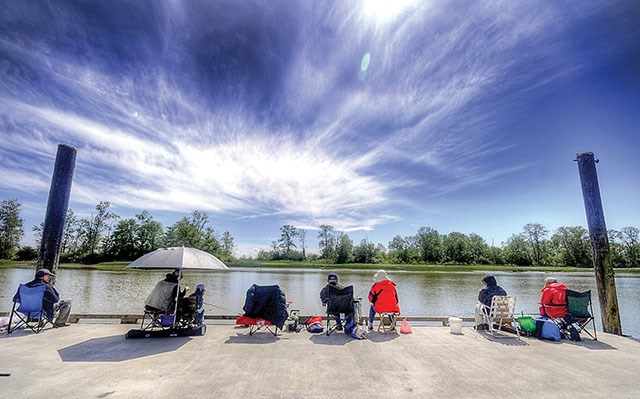A soggy commercial break in a hot, three-month trilogy.
That's how best to describe Environment Canada senior climatologist David Philips' summation of the next few days' weather in and around Richmond in relation to the triple-header of June, July and August. Although we're moving back to seasonal norm temperatures this weekend and into next week, Phillips said it's highly unlikely to last.
"What we've had (since June 1) is lower than normal precipitation, along with higher than normal temperatures, but even when it was hot, we didn't see many figures in the 30s in Richmond," said Philips, noting Richmond has had, for June and July, a little more than half the normal rainfall.
"Over the next few days, however, you'll see some rainfall, but it doesn't mean the summer is going to be over; this is just a short intermission." What Environment Canada's forecast models show, said Phillips, is from the end of July, well into September, there will be higher than normal temperatures. "Looking further ahead, it's possible the milder run will run into winter."
No water shortage
Despite the higher than normal temperatures in June and July, Metro Vancouver's reservoirs are sitting pretty at 90 per cent full.
And although there are longer-range forecasts of a hotter than average summer, Metro Vancouver isn't anticipating too many issues with water shortages this season.
Plenty of airtime
Richmond's coastal breeze and cooler temperatures goes a long way to the city side-stepping the likes of last week's Metro Vancouver ozone air quality warning.
As residents in parts of the region were advised to avoid strenuous exercise outdoors, due to abnormally high levels of ozone (produced when you get a certain amount of sunlight, heat, nitrogen oxides and volatile organic compounds, such as paint and vegetation) Richmondites were free to jog the dyke.
"To give you an idea of the levels in different parts of the region; the ozone levels for the worst affected area was around 83-86 PBB (parts per billion). In Richmond, it was just 44-50," said Metro Vancouver air quality planner Julie Saxton.
"There are lots of factors, but typically the temperature nearer the coast is lower than elsewhere."



